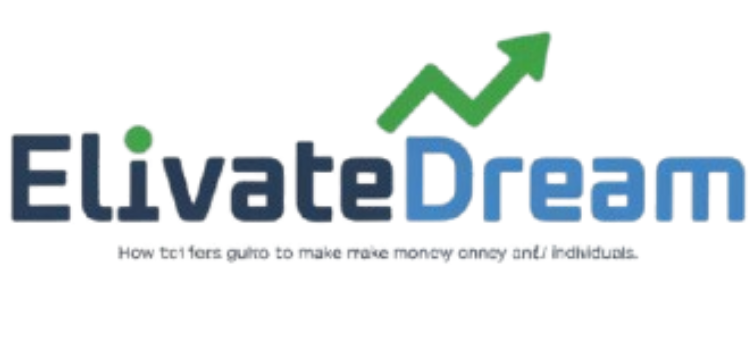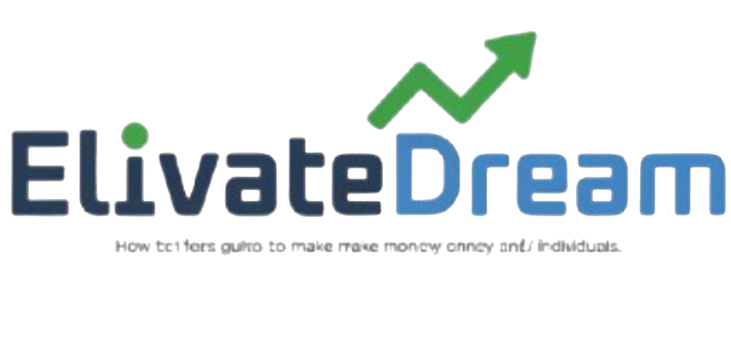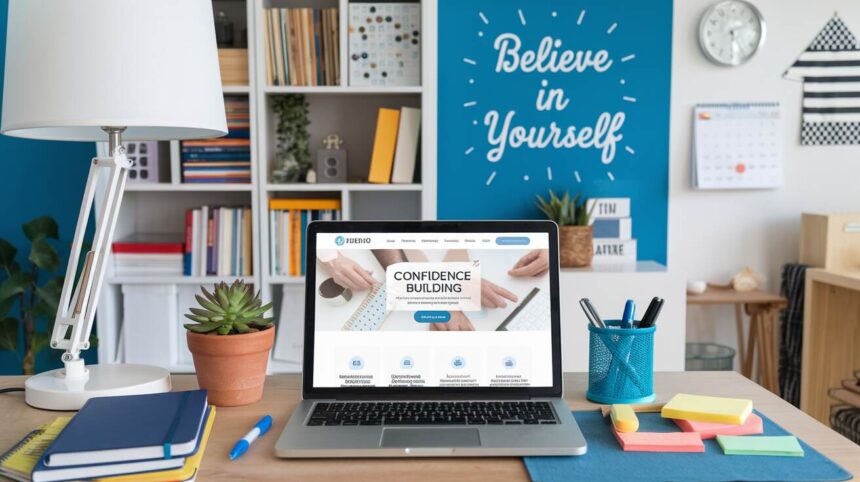Confidence Building Online
“Are you tired of feeling like a chaiwallah (tea vendor) in the world of confidence building? Do you want to become a confidence guru like Baba Ramdev? This article will guide you through creating an online confidence-building platform and make you laugh along the way.”

In today’s fast-paced, interconnected world, confidence is a cornerstone of personal success and happiness.
Whether it’s excelling in relationships, career growth, or mental well-being, confidence influences every aspect of our lives.
With the rise of online learning and personal development platforms, there is a growing demand for accessible confidence-building resources.
This eBook is your comprehensive guide to creating a successful online confidence-bbuilding platform.
Whether you’re an aspiring entrepreneur, a seasoned professional, or someone passionate about personal development, this guide will equip you with the
knowledge and tools to help others overcome self-doubt and unlock their true potential.
Confidence affects every aspect of our lives.
Why Confidence Matters

Confidence affects every aspect of our lives.
- Personal relationships: Building strong, healthy relationships requires confidence in oneself and the ability to communicate effectively.
- Career Growth: Confidence is crucial for taking on new challenges, seeking promotions, and excelling in your profession.
- Mental Well-being: Confidence contributes to overall mental health, resilience, and the ability to cope with stress.
- Resilience in Adversity: Confident individuals are better equipped to handle setbacks and recover from failures.
By creating an online confidence-building resource platform, you’ll not only empower individuals worldwide but also establish a profitable online business and diversify your income streams.
In this comprehensive guide, you’ll learn:
- The business model and market potential
- Step-by-step website and YouTube channel setup
- Content creation strategies
- Marketing and monetization techniques
- Maintenance and scaling best practices Get ready to transform lives and build a thriving online business!
Chapter 1: Understanding the Business Model
“Imagine you’re at an Indian wedding, and everyone’s asking,
“Kya kar rahe ho?” (What are you doing?). You say,
“I’m building an online confidence platform!” They’ll say, “Wah, kya idea hai!” Wow, what an idea!
Our business model:
- Website: Your digital dukaan (shop)
- YouTube Channel: Your video darbar (court)
- Digital Products: Your confidence-building masala (spices)
- AdSense: Your paisa kamane ka formula (money-making formula)”
The Online Confidence-Building Resource Platform
Creating a successful online confidence-building platform involves several key components:
- Website: Your central hub for resources, information, and engagement.
- YouTube Channel: A platform for video content that engages your audience and builds a community.
- Digital Products: eBooks, online courses, and exclusive materials that provide value to your audience.
- Monetization: revenue generation through AdSense, affiliate marketing, sponsored content, and digital product sales.
Market Demand and Potential
With the increasing focus on personal development and mental health, the demand for confidence-building resources is soaring. The global online personal development market is projected to grow exponentially, presenting a lucrative opportunity for entrepreneurs. Revenue Streams
- Digital Product Sales: eBooks, guides, and online courses.
- AdSense Revenue: Monetize your website and YouTube channel through ads.
- Affiliate Marketing: Promote relevant products and earn commissions.
- Sponsored content and partnerships: collaborate with brands and earn through sponsorships.
The Indian market offers immense potential due to its large population and increasing internet penetration. Cultural nuances and local preferences play a significant role in shaping content and strategies. Understanding these factors is crucial for success. Key Considerations for Indian Audience
Cultural Sensitivity: tailor content to resonate with Indian cultural values and norms.
Language Diversity: Consider multilingual content to cater to diverse linguistic groups.
Local Examples: Use examples and case studies relevant to Indian contexts to enhance relatability.
Affordable Pricing: Offer value-based pricing to align with the spending power of the Indian audience.
Chapter 2: Crafting Engaging Content
“ Content is like food for your audience. Give them:

- Tasty tips (confidence-building advice)
- Spicy stories (inspirational tales)
- Funny memes (humorous illustrations): Use AI tools like ChatGPT to rewrite content, just like a Bollywood scriptwriter rewrites dialogues! ”
1. Researching Confidence-Building Topics
Creating engaging and impactful content starts with thorough research. Here’s how to identify and develop topics that resonate with your target audience.
- Identify Your Target Audience and Their Needs Understanding who your audience is and what they need is fundamental. For an Indian audience, consider:
- Demographics: age, gender, location, education level.
- Psychographics: interests, values, lifestyle, challenges.
- Pain Points: Specific confidence issues they face, such as public speaking anxiety, career advancement fears, or self-esteem issues.
2. Analyze Popular Confidence-Building Resources
Examine existing platforms and resources to identify gaps and opportunities. Look at what’s trending on platforms like YouTube, blogs, and social media. Identify common themes and areas that need more coverage.
3. Explore Relevant Themes and Subtopics
Break down confidence building into specific themes to provide focused content. Examples include:
- Overcoming Self-Doubt
- Building Resilience
- Effective Communication Skills
- Public Speaking Confidence
- Self-Esteem Enhancement
Content Types
Diversifying your content types can cater to different learning preferences and increase engagement.
- eBooks and Guides: In-depth resources that provide comprehensive information on confidence building.
- Video Scripts and Tutorials: engaging video content that visually demonstrates techniques and exercises.
- Blog posts and articles: regular updates and insights to keep your audience engaged and informed.
- Social Media Content and Quotes: Short, impactful posts and quotes to inspire and motivate your followers.
Transcribing and Rephrasing Existing Content
Leveraging existing content can save time and ensure quality. Here’s how:
- Utilize Public Domain Works and Creative Commons Licenses: Ensure you have the right to use and modify content.
- Leverage AI Tools for Content Generation and Rewriting: Use tools like ChatGPT to generate and refine content.
- Ensure uniqueness and quality through editing and refinement: personalize and enhance content to maintain originality and high standards.
Best Practices for Content Optimization

- SEO Techniques for Search Engine Ranking: Optimize your content with relevant keywords to increase visibility.
- Engaging Headlines and Descriptions: Craft compelling titles and descriptions to attract readers.
- High-Quality Visuals and Multimedia: Use images, videos, and infographics to make your content more engaging.
- Accessibility and Readability Considerations: Ensure your content is easy to read and accessible to a wide audience.
Content Creation Tools
- ChatGPT and Language Generators: For generating and refining written content.
- Grammarly and Writing Assistants: To proofread and enhance content quality.
- Canva and Graphic Design Tools: For creating visually appealing graphics and infographics.
- Screen Recording and Video Editing Software: Tools like OBS Studio, Adobe Premiere Pro, or Final Cut Pro for creating and editing video content.
Example: Creating an Engaging Blog Post
Title:
“5 Proven Techniques to Boost Your Confidence in Public Speaking”
Outline:
- Introduction: Importance of public speaking confidence
- Technique 1: Preparation and Practice
- Technique 2: Positive Visualization
- Technique 3: Breathing Exercises
- Technique 4: Building a Support System
- Technique 5: Seeking Feedback and Continuous Improvement
Conclusion: Encouragement and next steps
Chapter 3: Setting Up Your Website
“Choose a domain name, like example: SelfBelief.in

Design a website that’s:
1. Easy to navigate (like a Mumbai local train)
2. Visually appealing (like a Bollywood movie poster)” Building Your Online Hub A professional, user-friendly website is essential for your confidence-building platform. There are also website builder platforms like Wix and WordPress, which will help you create with ready templates.
Here’s how to set it up effectively.
Choosing a Domain Name and Web Hosting
1. Select a memorable and relevant domain name:
Choose a name that reflects your mission and is easy to remember. Examples for Indian audiences:
- ConfidenceHub.in
- BoostYourConfidence.in
- SelfEsteemIndia.com
2. Compare Web Hosting Options:
Choose a reliable web hosting provider that offers scalability and excellent uptime. Popular options in India include:
- Bluehost
- HostGator India
- SiteGround
3. Consider Scalability and
Reliability:
Ensure your hosting plan can handle increasing traffic as your platform grows.
Designing a User-Friendly Website
1. Simple Navigation and Clear Layout: Ensure users can easily find information without confusion.
2. Responsive Design for Mobile Devices: With high mobile internet usage in India, ensure your website is mobile-friendly.
3. Engaging Visuals and Branding: Use consistent colors, fonts, and imagery to create a cohesive brand identity.
Example: Homepage Layout
- Header: Logo, navigation menu (Home, About, Resources, YouTube, Blog, Contact)
- Hero Section: Inspirational image with a tagline like “Unlock Your Confidence Today.”
- About Section: Brief introduction about your mission and what you offer
- Featured Resources: Highlight eBooks, courses, and popular blog posts
- YouTube Channel Link: Embed latest video or a link to subscribe
- Testimonials: Display feedback from users
- Footer: Contact information, social media links, newsletter signup
Search Engine Optimization (SEO)

1. Keyword Research and Integration
- Identify Relevant Keywords: Use tools like Google Keyword Planner or Ubersuggest to find high-traffic keywords related to confidence building.
- Integrate Keywords Naturally: Incorporate keywords into your content, including titles, headings,
- meta descriptions, and body text without keyword stuffing.
2. Meta Tags and Descriptions
- Title Tags: Ensure each page has a unique, keyword-rich title tag.
- Meta Descriptions: Write compelling meta descriptions that include primary keywords and encourage clicks.
3. Internal Linking and Content Hierarchy
- Internal Linking: Link related content within your website to improve navigation and SEO.
- Content Hierarchy: Organize your content with clear headings and subheadings to enhance readability and SEO performance.
4. Continuous Monitoring and Optimization

- Use tools like Google Analytics: Track your website’s performance, user behavior, and conversion rates.
- Regularly Update Content: Keep your content fresh and relevant to maintain high SEO rankings.
Once a website gets traffic, it will make money through Google AdSense by displaying ads on it.
Chapter 4: Creating Your YouTube Channel
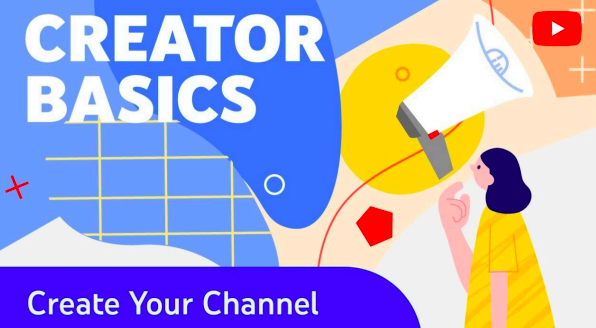
“Create videos that are
1. Engaging (like a cricket match)
2. Informative (like a documentary)
3. Entertaining (like a comedy show)”
Establishing Your Video Presence Creating a YouTube channel is a powerful way to engage with your audience visually and build a community around your confidence-building content.
Setting Up Your YouTube Channel
1. Create a YouTube Account: If you don’t have one, sign up for a Google account and create your YouTube channel.
2. Choose a Unique and Memorable Channel Name: Ensure it aligns with your brand and is easy to remember.
Examples: ConfidenceIndia, BoostYourSelfEsteem, SelfConfidenceGuru
3. Customize Your Channel Art and Description:
- Channel Art: Design a professional banner that reflects your brand using tools like Canva.
- Channel Description: Write a compelling description outlining what viewers can expect from your channel.
Video Content Strategies
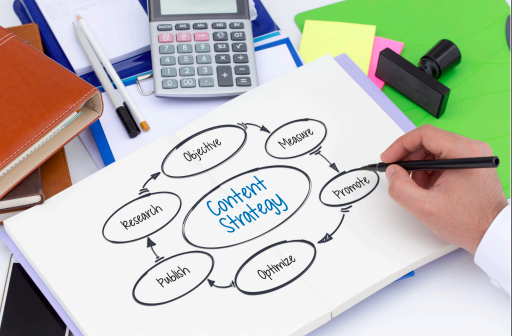
- Confidence-Building Tutorials and Workshops: Create step-by-step guides and interactive workshops to help viewers build their confidence.
- Inspirational Stories and Testimonials: Share real-life stories and testimonials from individuals who have overcome self-doubt.
- Expert Interviews and Panel Discussions: Feature interviews with psychologists, life coaches, and other experts in personal development.
- Animated Explainers and Motivational Videos: Use animations to explain complex concepts and create motivational content to inspire your audience.
Creating Engaging Video Titles, Descriptions, and Tags
- Keyword Research and Optimization: Use relevant keywords in your titles, descriptions, and tags to improve discoverability.
- Attention-Grabbing Titles and Thumbnails: Create compelling titles and visually appealing thumbnails to attract clicks.
- Detailed Descriptions and Timestamps: Provide comprehensive descriptions and timestamps for better user experience and SEO.
- Relevant Tags and Categories: Use appropriate tags and categorize your videos to reach your target audience effectively.
Optimizing Video Settings for Monetization
- Enable Monetization on Your Channel: Join the YouTube Partner Program to start earning from ads.
- Set Up AdSense and Payment Information: Link your channel to an AdSense account for revenue collection.
- Understand YouTube’s Community Guidelines: Ensure your content complies with YouTube’s policies to avoid demonetization.
Building Your YouTube Community
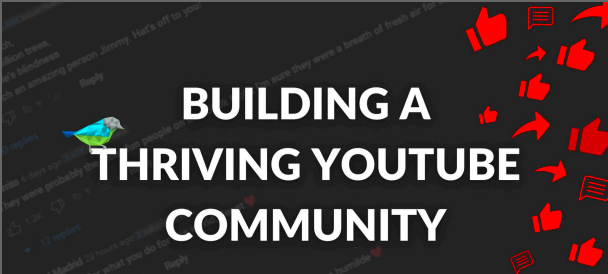
- Engage with Viewers through Comments: Respond to comments and create a dialogue with your audience.
- Respond to Questions and Feedback: Address viewer questions and incorporate their feedback into your content.
- Collaborate with Other Creators: Partner with other YouTubers in the personal development niche to expand your reach.
- Utilize YouTube Analytics for Growth: Use analytics to understand your audience’s preferences and optimize your content accordingly.
Example: Creating an Engaging Video
Series
Series Title: “30 Days to Unshakeable Confidence” Episode Outline:
- Day 1: Introduction to Confidence Building
- Day 2: Setting Confidence Goals
- Day 3: Overcoming Self-Doubt
- ●…………….
- Day 30: Maintaining Your Confidence
Chapter 5: Monetizing Digital Products
“Sell digital products like:

- eBooks (confidence-building guides)
- Courses (online tutorials)
- Webinars (live sessions) Price them like:
1. Thali (meal): affordable and value-for-money
2. A la carte—premium and exclusive”
Creating Digital Products
Offering digital products is a key strategy to monetize your confidence-building platform. Here’s how to create valuable digital products that resonate with your audience.
1. eBooks and Guides

- eBooks: Comprehensive guides on specific aspects of confidence building.
- Example: “Mastering Public Speaking: A Confidence Builder”
- Guides: shorter, focused content pieces offering actionable tips.
- Example: “10 Daily Habits to Boost Your Confidence”
These books can be sold in a range of 100₹ to 250₹ on your website
2. Online Courses and Tutorials

- Video Courses: structured courses with video lessons, assignments, and quizzes.
- Example: “Confidence BoostingMasterclass: From Self-Doubt to Self-Assured”
- Interactive Tutorials: Step-by-step tutorials that engage users.
- Example: “Interactive Workshop: Building Confidence Through Positive Affirmations”Such course videos can also be uploaded on YouTube, which will make money through Google AdSense.
3. Webinars and Workshops
- Live Webinars: Host live sessions on specific topics, allowing for real-time interaction.
- Example: “Live Webinar: Overcoming Anxiety and Building Self-Confidence”
- Recorded Workshops: Offer recorded versions for those who cannot attend live sessions.
- Example: “Recorded Workshop: Effective Communication for Confidence”
4. Exclusive Membership Programs
Membership Tiers: Offer different levels of access based on subscription tiers. Example: “Premium Membership: Access to Exclusive Content and One-on-One Coaching”
Community Access: Provide access to private communities or forums.
Example: “VIP Community: Join a supportive group of like-minded individuals.”
Pricing Strategies
1. Value-Based Pricing Set prices based on the value your products provide rather than the cost of production. Consider the transformation your audience will experience.
2. Tiered Pricing Offer multiple pricing levels to cater to different budgets and needs.
- Basic Tier: Access to core content.
- Premium Tier: Additional resources, one-on-one coaching, exclusive content.
3. Limited-Time Offers and Discounts
Create urgency and encourage purchases through limited-time discounts.
- Example: “Get 20% off our Confidence Masterclass if you enroll within the next 48 hours!”
4. Bundling and Upselling Combine multiple products into a bundle for a higher perceived value.
- Example: “Ultimate Confidence Bundle: eBook + Online Course + Exclusive Webinar”
Setting Up Payment Gateways
1. PayPal and Stripe Integration Integrate reliable payment gateways to facilitate smooth transactions.
- PayPal: Widely recognized and trusted by users.
- Stripe offers seamless integration and supports multiple payment methods.
2. Secure Checkout Processes
Ensure your checkout process is secure to protect user data and build trust.
- Use SSL certificates to encrypt data.
- Display trust badges and secure payment symbols.
3. Automated Email Receipts and Confirmations
Automate the sending of receipts and order confirmations to enhance user experience.
Use tools like Mailchimp or ConvertKit for email automation. Marketing Strategies for Digital Product Sales
1. Email Marketing Campaigns
- Build an Email List: Use lead magnets like free eBooks or webinars to collect email addresses.
- Newsletter Creation and Scheduling: Regularly send newsletters with valuable content and product promotions.
- Personalization and Segmentation: Tailor emails based on user behavior and preferences for higher engagement.
2. Social Media Promotions
- Run Targeted Ads: Use Facebook and Instagram ads to reach your ideal audience.
- Engage with Followers: Share success stories, testimonials, and behind-the-scenes content to build
3. Influencer Partnerships
- Collaborate with Influencers: Partner with influencers in the personal development niche to promote your products.
- Affiliate Marketing Programs: Create an affiliate program to incentivize others to promote your products.
Chapter 6: Marketing and Promotion

Reaching Your Target Audience Effective marketing is essential to drive traffic and grow your platform. Here are proven strategies tailored for the Indian market.
Social Media Marketing
- Platform Selection: Focus on platforms popular in India like Facebook, Instagram, and YouTube.
- Content calendar and scheduling: plan your content in advance to ensure consistency.
- Engaging Hashtags and Challenges: Use relevant hashtags to increase visibility and create challenges to engage your audience.
- Influencer Collaborations: Partner with local influencers to amplify your reach.
Content Collaboration and Guest Blogging
- Partnering with Other Creators: Collaborate with bloggers, YouTubers, and podcasters in the personal development space.
- Guest blogging and article contributions: Write guest posts for popular Indian blogs and websites to increase your visibility.
- Resource Page and Link Building: Create a resource page on your website and build backlinks from reputable sites.
- Expert Interviews and Podcasts: Host or participate in interviews and podcasts to establish authority and reach a broader audience.
Performance Analytics and Optimization
1. Website Analytics Tools (Google Analytics)
- Track User Behavior: Understand how visitors interact with your website, which pages they visit, and where they drop off.
- Monitor traffic sources: identify which channels drive the most traffic and conversions.
2. Social Media Insights and Metrics
- Engagement Metrics: Track likes, shares, comments, and overall engagement to measure content effectiveness.
- Audience Demographics: Understand the demographics of your social media followers to tailor your content accordingly.
3. Email Marketing Metrics and Tracking
- Open rates and click-through rates: measure the effectiveness of your email campaigns.
- Conversion Rates: Track how many email subscribers convert into customers.
4. Continuous Testing and Refinement
- A/B testing: experiment with different headlines, images, and calls-to-action to determine what works best.
- Content refinement: Continuously improve your content based on feedback and performance data.
Example: Social Media Campaign for an eBook Launch Campaign Objective: Promote the launch of your eBook “Mastering Self-Confidence.” Strategy:
- Pre-Launch Teasers: Share sneak peeks of the eBook on Instagram Stories and Facebook posts.
- Launch Day Live Webinar: Host a live webinar on YouTube discussing key topics from the eBook and offer a special discount for attendees.
- Post-Launch Promotion: Run Facebook and Instagram ads targeting your email list and social
media followers.
Engage with Influencers: Partner with Indian influencers to review and promote your eBook to their followers.
Chapter 7: Maintaining and Scaling Your Business
Ensuring Long-Term Success Maintaining and scaling your confidence-building platform requires
ongoing effort and strategic planning. Here’s how to ensure sustained growth. Regular Content Updates
- Schedule Regular Blog Posts and Videos: Keep your content fresh and up-to-date to retain your audience’s interest.
- Update Existing Content for Relevance: Revise older content to reflect current trends and new insights.
- Encourage user-generated content: Motivate your audience to share their own confidence-building journeys and stories.
Website Maintenance
- Monitor Website Performance and Uptime: Use tools like Pingdom or UptimeRobot to ensure your website is always accessible.
- Update Plugins and Software: Regularly update your website’s plugins and software to maintain security and functionality.
- Ensure Security and Backups: Implement robust security measures and schedule regular backups to protect your data. Scaling Your Business
- Outsourcing Tasks (Content Creation, Design): Hire freelancers or virtual assistants to handle content creation, graphic design, and other tasks, allowing you to focus on
growth.
- Automating repetitive tasks (email marketing): Use automation tools like Mailchimp or ConvertKit to streamline your email marketing efforts.
- Investing in Advertising (Facebook, Google): Allocate budget towards targeted advertising campaigns to reach a larger audience and drive more traffic to your platform.
Analyzing Performance Metrics
- Website Analytics (Google Analytics): Continuously monitor website metrics to understand user behavior and optimize accordingly.
- Social media insights (Facebook, Instagram): track engagement and reach to refine your social media strategy.
- Email marketing metrics (Mailchimp): analyze open rates, click-through rates, and conversions to improve your email campaigns.
- Continuous testing and refinement: Regularly test new strategies and refine existing ones based on performance data.
Community Engagement
- Respond to Comments and Feedback: Engage with your audience by responding to their comments and feedback promptly.
- Host webinars and Q&A sessions: Organize live webinars and Q&A sessions to interact with your audience and address their queries.
- Offer Exclusive Content and Rewards: Provide exclusive content and rewards to loyal members to
foster a strong community. Example: Scaling Your Platform with Affiliate Marketing Objective: Increase revenue by leveraging affiliate marketing.
Strategy:
- Identify Relevant Affiliate Programs: Partner with companies that offer products or services related to confidence building, such as self-help books, online courses, or wellness products.
- Promote Affiliate Products: Integrate affiliate links within your eBooks, blog posts, and YouTube videos.
- Track Performance: Use affiliate tracking tools to monitor clicks, conversions, and revenue.
- Optimize Campaigns: Analyze performance data to identify top-performing affiliates and optimize your campaigns for better results.
Chapter 8: Case Studies and Success Stories

Learning from Successful Confidence-Building Platforms Real-world examples provide valuable
insights and inspiration. Here are some case studies that highlight effective strategies
and their outcomes.
Case Study 1: Building a YouTube Community in India Background: An Indian entrepreneur launched a YouTube channel focused on confidence building, targeting young professionals and students.
Strategy:
- Consistently uploaded high-quality video content, including tutorials, motivational talks, and expert interviews.
- collaborated with popular Indian influencers to reach a wider audience.
- Utilized SEO techniques to optimize video titles, descriptions, and tags.
Results:
- Grew the channel to 50,000 subscribers within six months.
- Increased engagement with average video views of 10,000+.
- Generated₹1 lakh in AdSense revenue and₹50,000 through affiliate marketing.
Key Takeaway:
Consistency and strategic collaborations with influencers can significantly accelerate growth and revenue generation on YouTube.
Case Study 2: Monetizing Digital Products on an Indian Platform Background: A personal development coach created an online platform offering eBooks, courses, and webinars focused on confidence building.
Strategy:
- Developed a series of eBooks tailored to different aspects of confidence building.
- Launched online courses with interactive modules and live sessions.
- Promoted products through email marketing and social media campaigns.
Results:
- Sold 200 eBooks and 50 online courses within three months.
- Generated₹3 lakhs in revenue from digital product sales.
- Built a loyal community with high customer retention rates.
Key Takeaway:
Diversifying digital product offerings and leveraging multiple marketing channels can drive substantial revenue and foster a loyal customer base.
Case Study 3: Effective Marketing Strategies for an Indian Audience Background: A startup focused on online confidence-building resources aimed to expand its reach across India.
Strategy:
- Ran targeted Facebook and Instagram ads focusing on Indian festivals and regional languages.
- Created multilingual content to cater to diverse linguistic groups.
- Partnered with local influencers to promote the platform.
Results:
- Increased website traffic by 150% within two months.
- Boosted sales of digital products by 80%.
- Enhanced brand visibility and recognition across multiple Indian regions.
Key Takeaway:
Localized marketing strategies, including multilingual content and culturally relevant campaigns, are crucial for success in the diverse Indian market.
Conclusion and Next Steps
Congratulations!
You’ve successfully created an online confidence-building platform. By following the strategies outlined in this eBook, you’re well-equipped to empower individuals, build a profitable online business, and make a meaningful impact.
Stay Connected
Follow us for more e-commerce guides, business tips, and resources.
